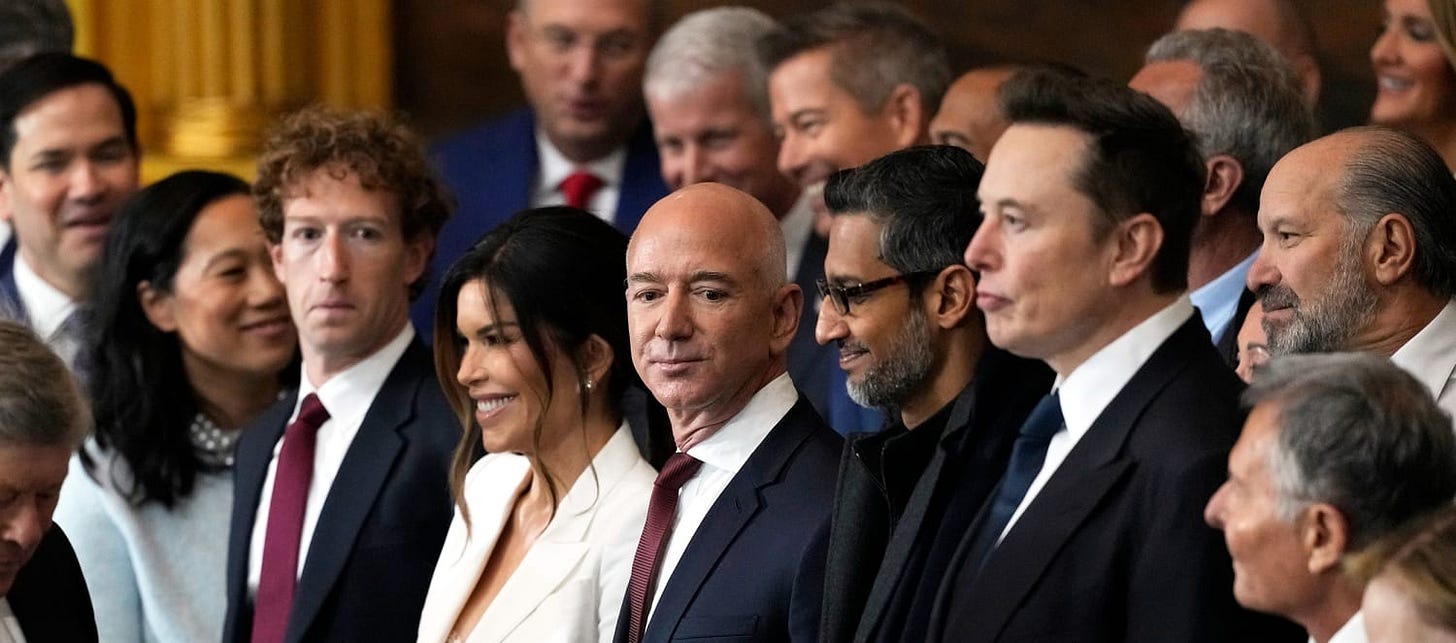In 1966 journalist Tom Wolfe attended a reception on New York's swank Upper East Side where rich hosts and guests gushed over leaders of the militant Black Panther party. Wolfe's send-up of the affair, titled “Radical Chic," became a landmark of the so-called New Journalism and afforded ammunition to conservatives who decried the hypocrisy of "limousine liberals”—poshies stereotyped as supporting progressive causes from the comfort of their chauffeured town cars.
Wolfe died in 2018 but if his ghost is interested in an encore the most recent decade in American politics furnishes ample material. It started in 2015 when billionaire developer Donald Trump descended a golden escalator in Manhattan's Trump Tower and pronounced a new populism. Trump had flirted with politics before but never gained enough traction to be taken seriously. Most Trump watchers assumed this was another effort to win free advertising for the Trump brand.
To their amazement — perhaps Trump’s, too — the message caught on among voters in the 2016 Republican primaries. In a numerous field of candidates, Trump and his vow to “Make America Great Again" stood out. He swiftly grew into his persona as the savior of working-class Americans ignored or patronized by the degreed elites who’d seized control of the Democratic party.
Trump turned the primary campaign into a reality television show filled with outrageous plot pivots, usually involving some statement or action by Trump that would have doomed the candidacy of anyone else but further endeared this rakish bad-boy to his growing army of supporters. The more the elites deplored Trump, the more powerful became his appeal to the millions who felt similarly deplored by those same elites. Trump's momentum carried him to victory at the Republican nominating convention and in the general election that followed.
At this point he stumbled. Unprepared for victory, he was compelled to look to Republican regulars to staff his administration. His philosophy of governance was no deeper than his slogan, and as those regulars filled out that philosophy for him, it lost its populist focus. In turn he lost the 2020 election and was evicted to Mar-a-Lago to lick his wounds and plot his comeback.
He doubled down on his populist schtick and contrived to enlist a cohort of even fatter cats than himself. Elon Musk, Mark Zuckerberg, Jeff Bezos and the others had mercenary reasons for donning MAGA hats — reasons not unlike those that had prompted Trump's turn to politics in the first place — but the result was to amplify the incongruity of Trump's penthouse populism. The net worth of the front row at Trump's second inauguration was reckoned to equal the GDP of a dozen or so modest-sized countries.
Trump proceeded to enlist Musk, the richest person in the world, to slash and burn the administration's way to the heart of the “deep state" where entrenched liberals were said to defy all efforts to return democracy to the control of the American people.
The incongruity achieved historical proportions, at least in the perceptions of those who looked to history for populist parallels. America's first efflorescence of populism carried Andrew Jackson to the presidency in 1829. Old Hickory behaved like a traditional populist, assailing the wealthy on behalf of ordinary Americans. His prime target was the powerful Bank of the United States. His nemesis was Nicholas Biddle, the bank's arrogant director. A battle ensued, with Jackson besting Biddle and busting the bank.
The second coming of American populism. embodied in Populist party of the 1890s, was less immediately successful. But the Populists fit the same David-vs.-Goliath mold as the Jacksonians. Their principal target was the corporate trusts — monopolies — of the Gilded Age and the moguls who owned them. The Populists demanded the breakup of the trusts and the restoration of fair competition in the American economy. Trust-busting occurred, but not for a decade and not before the Populist party had been absorbed by the Democrats and its program adopted by a bipartisan collection of progressives after the turn of the 20th century.
What Trump's third-wave populism will yield is unclear. But given that the monied men are the assailers this time rather than the assailed, one has to imagine that any successful result — successful from the perspective of Trump and his billionaire buddies — will have a result opposite the results of the earlier waves. The rich and powerful will become richer and more powerful. Ordinary folks — the ones populists are supposed to fight for — will bear the cost.
Some populism.




This 'new populism' is simply a front for what I call Industrial Feudalism.
Whereas original feudalism was based on land and peasants tied to it with a hierarchical structure, industrial feudalism will entail the top level of society of tech oligarchs and wealth CEOs - the implementation of job killing AI programs and destruction of the social safety net will keep the working class poor and desperate - it won't be a new Gilded Age- it will be much worse
This is good, but I think you could argue that the third wave of populism came with FDR after the 1920s. That decade was so fundamentally different and embraced by Americans, that it’s hard to argue it was merely part of the second wave. The appetite for populism died after WW1 and into the 20s. It only returned once the economy crashed at the end of the decade.